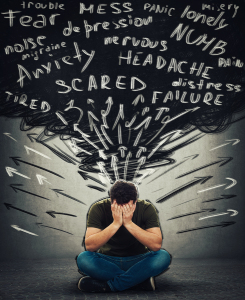 Post-traumatic stress (PTS) can occur after traumatic, shocking, or dangerous experiences. Normally, these types of experiences trigger “fight or flight” reactions which are meant to protect people from harm. At times, these experiences can manifest into PTS, creating more challenging recoveries. Ongoing feelings of stress after an event is over can lead individuals to feel fearful or stressed, even when they are no longer in danger. Symptoms of PTS usually first appear within 3 months of a traumatic event, but they can sometimes take years to manifest. PTS can cause individuals to “relive” experiences, avoid certain situations, or experience moodiness. Re-experiencing symptoms can include bad dreams, scary thoughts, or flashbacks in which individuals feel as if they are reliving the traumatic experience.
Post-traumatic stress (PTS) can occur after traumatic, shocking, or dangerous experiences. Normally, these types of experiences trigger “fight or flight” reactions which are meant to protect people from harm. At times, these experiences can manifest into PTS, creating more challenging recoveries. Ongoing feelings of stress after an event is over can lead individuals to feel fearful or stressed, even when they are no longer in danger. Symptoms of PTS usually first appear within 3 months of a traumatic event, but they can sometimes take years to manifest. PTS can cause individuals to “relive” experiences, avoid certain situations, or experience moodiness. Re-experiencing symptoms can include bad dreams, scary thoughts, or flashbacks in which individuals feel as if they are reliving the traumatic experience.
Certain factors can increase an individual’s vulnerability to PTS, such as childhood trauma, living through dangerous events, dealing with extreme loss, or watching someone else endure physical trauma.
Cognitive restructuring and gradual exposure therapy can be effective psychotherapies for PTS. Through cognitive restructuring, individuals can learn to make sense of bad experiences and memories and remove feelings of guilt or blame. Gradual exposure therapy helps individuals become empowered to control their fears. Through gradual exposure to “triggers,” individuals can overcome their fear and stress, and learn healthy ways to cope with their feelings.
Gradual exposure therapy is one of Dr. Jody’s areas of expertise. Click here to read more about her personal story and the therapeutic services available through NECASM. Contact us to learn more!
